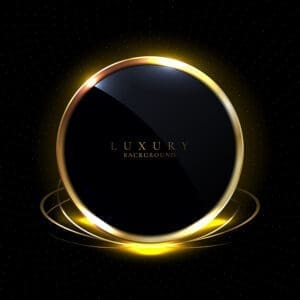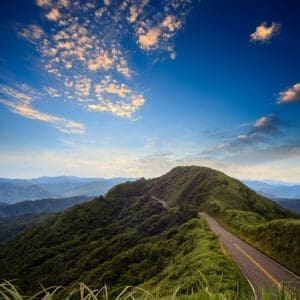 If you think cruising is corny, think again. Cruises are increasingly popular with tourists in search of culture, heritage and good food. River cruises pass by landscapes ocean cruise regulars aren’t used to seeing. On board, companies are going all out to turn tourists into freshwater sailors.
If you think cruising is corny, think again. Cruises are increasingly popular with tourists in search of culture, heritage and good food. River cruises pass by landscapes ocean cruise regulars aren’t used to seeing. On board, companies are going all out to turn tourists into freshwater sailors.
Did you say… cruise?
People ask themselves some basic questions when planning their holidays. First, “Where should I go?” It’s hard to choose between cities, the seaside or the mountains. Second, “How should I get there? By plane, car or train?” And third, “Where should I stay? At a hotel, somebody’s house or a campground?”
Although still relatively unknown, cruising is attracting a rising number of people. It’s a three-in-one solution, answering the question “Where should I go?” by offering several ports of call, “How should I get there?” because guests will be on a ship and “Where should I stay?” because they’ll sleep on board or at a hotel. In any case, everything is painstakingly planned for them to have the most enjoyable experience possible with all-inclusive deals and a choice of shore excursions.
The stereotype of the “typical” cruise passenger is the well-off baby boomer in search of luxurious holidays, but that image is fading in the wake of increasingly wide cruise offers.
The cruise market is divided into two parts: sea and river cruises. The latter are probably not as well known but have had the wind in their sails in recent years. Their dynamism is sprucing up the dusty image of cruises as being somewhat old-fashioned.
Are river and ocean cruises the same?
From 2008 to 2013, the number of river cruise passengers rose by 10%, compared to just 7% for the industry as a whole. What’s behind this success?
River cruises are more intimate. The average ocean-going cruise ship has a capacity of 2,300 passengers, compared to 200 for riverboats. Some barges accommodate just 20 privileged passengers. They’re also less “flashy”. Neither floating palaces nor Las Vegas on water, riverboats usually don’t offer lavish shows, casinos, spas or rock-climbing walls.
The emphasis is on destinations. River cruise passengers spend more time ashore and can often take free guided tours at their ports of call in order to learn more about the local culture, from the architectural heritage to the food and way of life. Sometimes, representatives of the local culture — an ensemble of Dutch violinists, a Russian folk group or Chinese acrobats — come aboard a short while for a little chat.
The cultural aspect explains the growth of themed cruises. There’s something for everyone, from photography to golf, the religious heritage and wellness. People who enjoy wine or Impressionist paintings as well as couples in search of a romantic holiday are also likely to find what they’re looking for in this increasingly diversified offer.
Who are river tourists?
Most river cruise passengers are baby boomers between 50 and 70 years old, but that is tending to change. To attract people in their forties, companies are offering shorter cruises and adding fitness equipment, gyms or children’s clubs.
Some are also betting on luxurious comfort to better compete with sea cruises. Wi-Fi, saunas and private balconies make the voyage even nicer.
Since sea cruises are highly popular with North Americans, they naturally started taking more river cruises once the offer became more diversified. This group accounts for 25% of passengers in Europe. But the clientele is becoming increasingly international and the arrival of Russians and Chinese on the market is bringing down the average age of river cruise passengers.
Lastly, a new passenger profile is emerging: solo travellers. Often single, they hope to make friends or fall in love on the cruise. Companies have caught on: they’re increasing the number of single staterooms or offering these new customers discounts.
Historic, peaceful rivers
The most popular cruises are on three European rivers: the Rhine in Central and Western Europe, the Seine in France and the Danube, which flows through four European capitals: Vienna, Bratislava, Budapest and Belgrade.
Cruises on the Seine are famous for being romantic (passing the Eiffel Tower is mandatory), but so are those on the Rhine, which feature many castles, including Ehrenfels, the Mouse Tower, Stahleck and picturesque Pfalzgrafenstein, a World Heritage Site. But romantics should also beware of the Lorelei, the siren French poet Guillaume Apollinaire described thus: “At Bacharach there lived a blond witch/For whom men all around were dying of love…”
Mekong River cruises are among the most popular options in Asia. As its name suggests, the “mother of all rivers” takes its source in the Himalayas and crosses China, Laos, Burma, Thailand, Cambodia and Vietnam. Mekong River cruises take passengers past lush landscapes and the glories of Khmer culture, including temples, especially the famous Angkor Wat, a Unesco World Heritage Site, villages and traditional dances. Other rivers in Asia, such as the Irrawaddy in Burma and the Yangtze in China, are growing in popularity.
The Volga in Russia is another very popular river cruise destination. Passengers can behold Red Square and the Novodevichy monastery in Moscow; Yaroslavl, one of Russia’s oldest cities; magnificent lakes; and, not far from Saint Petersburg, Pushkin and the Catherine Palace.
There are many rivers to cruise on every continent, such as, in the Americas, the legendary Amazon with its amazingly diverse wildlife and flora, and the Mississippi aboard a majestic paddle-wheeler. In Africa, passengers can set out for a safari on the Zambezi, running up to (but not over) Victoria Falls.
Source:
AccorHotels’ TravelTrends


















